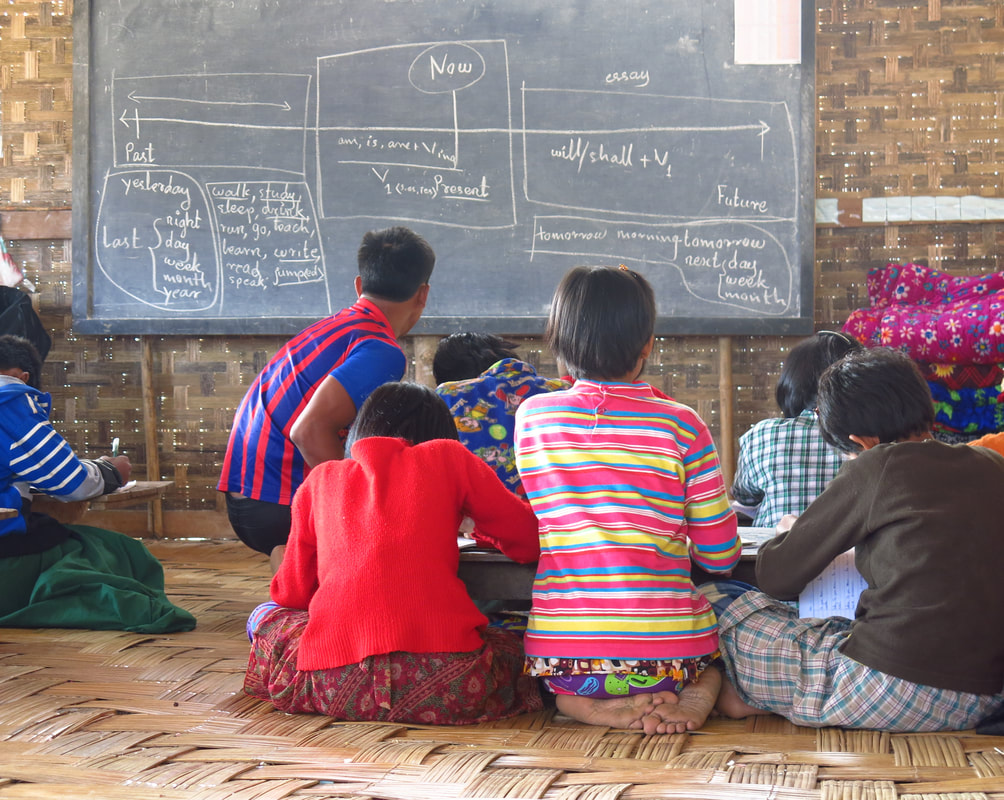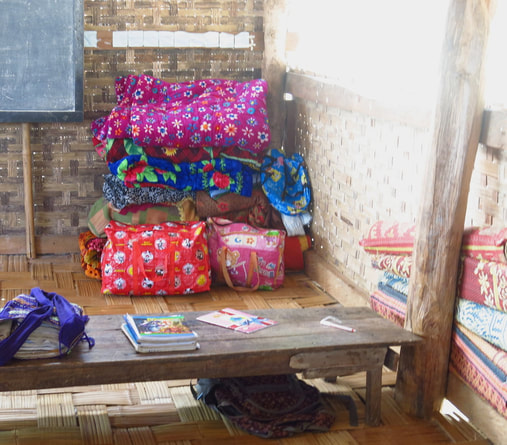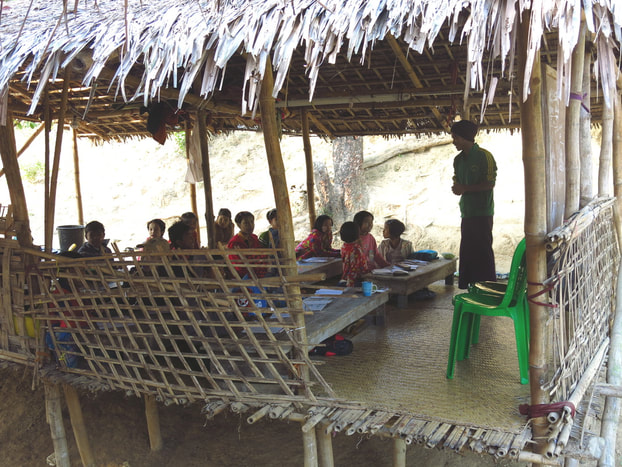|
One gaping hole which was left from my last visit to the R.E.C village was to observe one of our teacher trainees teaching his grade 8 English class and this was an oversight that I was keen to rectify. I knew that this would give me more insight into his overall teaching style as well as preparation technique, which I suspect is sorely lacking after seeing the lessons plans for the volunteer teachers that he had prepared. I had already met the collection of 20 students; most of whom are 13 years old save for one 15 year old who we are informed is at once the best at English yet repeating grade 8 for the third time. I make a note to enquire about the criteria that the teacher uses to discern ‘best in the class’ as I suspect it differs from my own judgment. I am told in the first of many feedback sessions that the boy can memorize quickly and efficiently; therefore he is the best. I was also shocked to hear this seemingly modern, westernized young teacher explain that he leaves the ‘bad’ students alone purposefully because they are not worth his time. They must attend class, yet they are bad at English; therefore teaching them is pointless because they cannot and will not learn. Van and I assumed our position at the back of the cold classroom. Each classroom is where the students learn, sleep and socialize. This is evident from the rack of brightly colored fleece blankets suspended above us on a hanging rack out of the way for daytime. Each child had a collection of brightly colored fleece items on their body as their morning breath comes out in puffs. Each child except the best member; the 15 year old. He sits at the back shivering as the first rising tendrils of sun glance through the half-height bamboo wall. How the child can concentrate I don’t know. I have a down-filled shiny French style bin bag coat wrapped tight around my frigid body and I still wish for more layers. The lesson got off to a fairly good, active start. The teacher wrote the words ‘banana,’ ‘elephant’ and ‘monkey’ onto the blackboard. This teacher has wonderfully tidy handwriting which he manages to get impressively white against the chalk-covered, faded grey-black of the board hanging precariously. It is suspended in the middle with one nail in a tree trunk and swings in the wind and when you write on it much more than I feel is conducive for a successful lesson. It seems to me as though if acrobatics are required instead of being chosen merely to get information onto a surface in a learning environment, then the school faces some rather hard problems. No matter, it is not I who has to contend with the board and this school has a plentiful chalk supply. The school does have several advantages over many rural schools I have visited during my time in Myanmar. Let me take this chance to talk briefly about the second advantage I listed. Many schools, both government and private, have more than one class per room. At R.E.C, each class of children has a separate room. However, there are no real walls and the flimsy bamboo only rises half way up the trunks that form beams. As we watch the lesson progress, it becomes harder to concentrate or hear as the grade 7 English class that is 3 feet away from us starts loudly chanting lessons by heart. I was disheartened yet not surprised to see that the teacher of this class has many views which I find uncomfortable or downright wrong about education. I hold out hope that he will have a change of heart. However, his older brother also holds very traditional views about the way education should be administered; thus, I’m guessing no-one will be the recipient of an education miracle any time soon. The grade 8 students did actions which corresponded to the three words written on the board, and all looked quite promising for the rather wild 5 minutes of activity as the floor and walls shook around us under the weight of 20 monkeys and elephants. Next was the introduction of a timeline. An idea which had been learned in my Yangon training sessions. It was conducted in a very teacher-led fashion however; with all 20 students shouting out at the same time and no student interaction with the timeline other than what was told by the teacher. I love timelines and think that they are very useful for showing students what happens with the more confusing tenses. However, it takes some time to train students to use timelines effectively. One point which many teachers find hard is how to refer to the past and future; because the teacher is the opposite way to the students, I find that it can be confusing to point left or right. Instead, I always point back over my shoulder for the past and ahead for the future. Even this can lead to some misunderstanding, but it is important to always use the same gestures for students as then they learn non-verbal cues upon which they can be instructed or corrected as necessary. As usual, I feel that if the students are active participants in an activity, they will better retain the information. It took almost an hour for the teacher to even address the back group of ‘bad’ students. This was not what we had hoped for at all. Even though I knew that we had a lot of work ahead and I knew that the class in front of me was to be expected, I did have higher hopes. The lesson was boring with no structure and too much local language. When the students were set a writing task at the end of class, there was no monitoring from the teacher and as soon as the children had finished they were allowed to come over to Van and I without the teacher really checking if they had been accurate in their work; only that something had been scribed onto a page in their book.
Chloe Smith NEH Coordinator and Teacher Trainer Related Posts: Observing Teacher Training Observing Students in Class Observing Teachers Observing Grade 7 English Observing the Monk's Class Observing a Student-Run Lesson Observing Grade Level Math at REC Observing an English Lesson and Fixing the Curriculum
Comments
|
This section will not be visible in live published website. Below are your current settings: Current Number Of Columns are = 3 Expand Posts Area = 1 Gap/Space Between Posts = 20px Blog Post Style = card Use of custom card colors instead of default colors = Blog Post Card Background Color = current color Blog Post Card Shadow Color = current color Blog Post Card Border Color = current color Publish the website and visit your blog page to see the results |
|
© New Education Highway 2024
Except where otherwise noted, content on this site is licensed under a Creative Commons Attribution 4.0 International License. |





